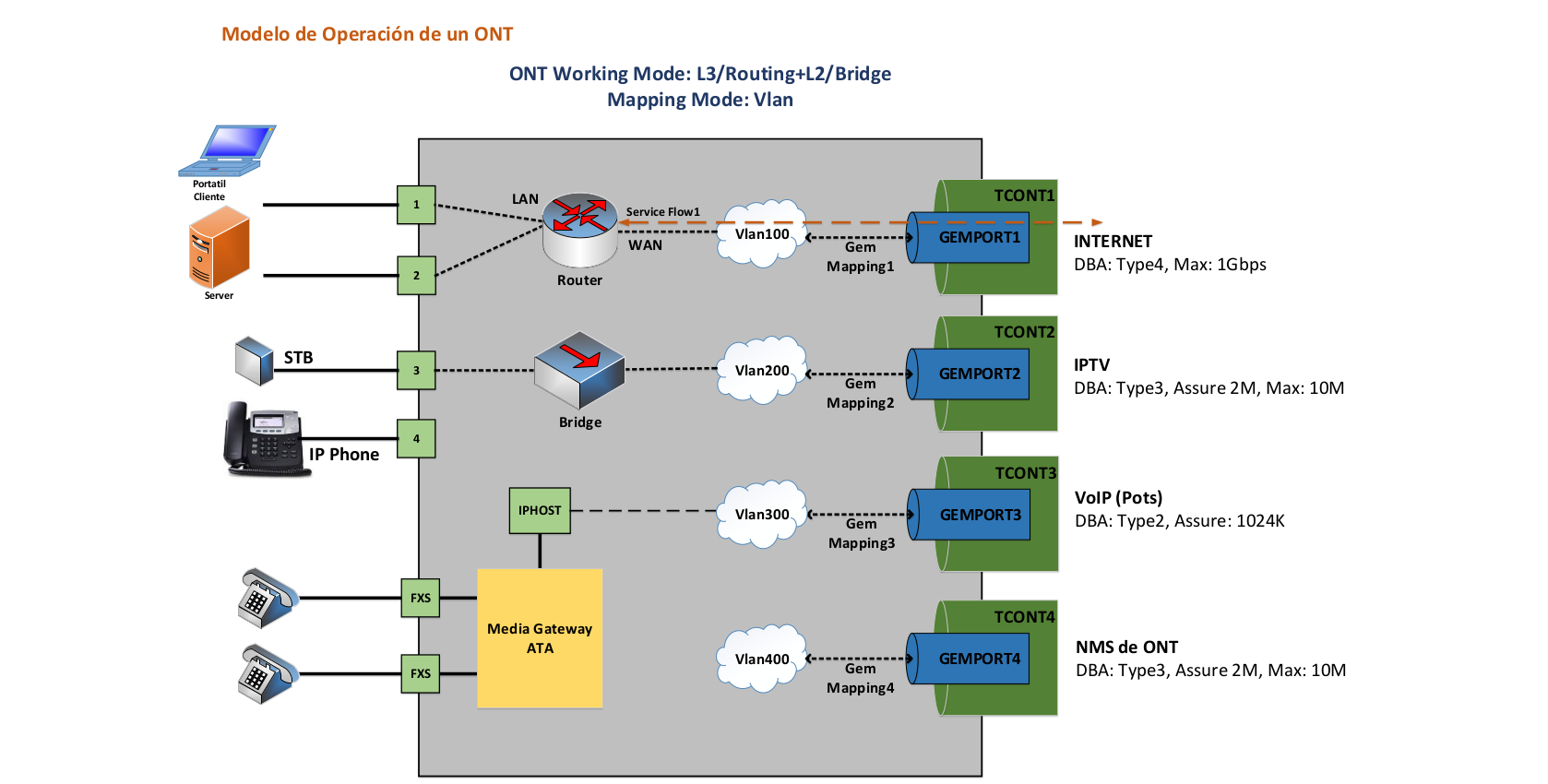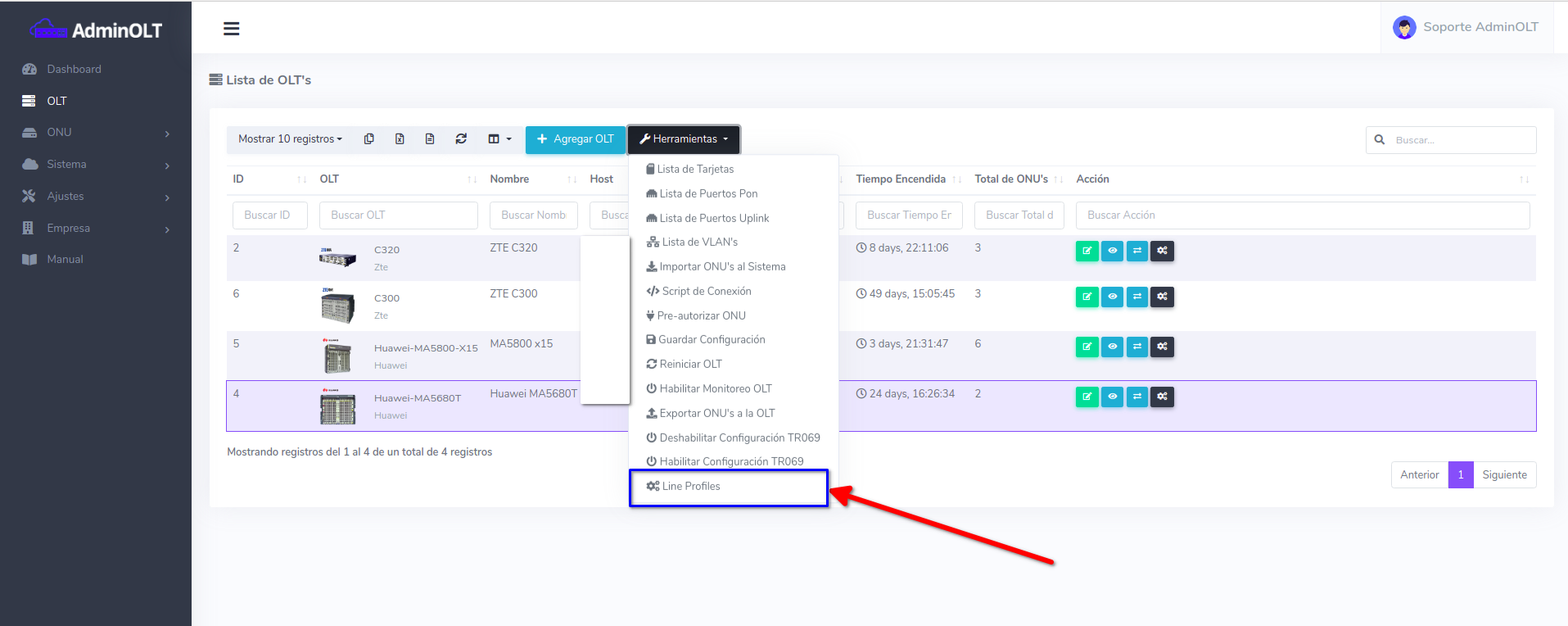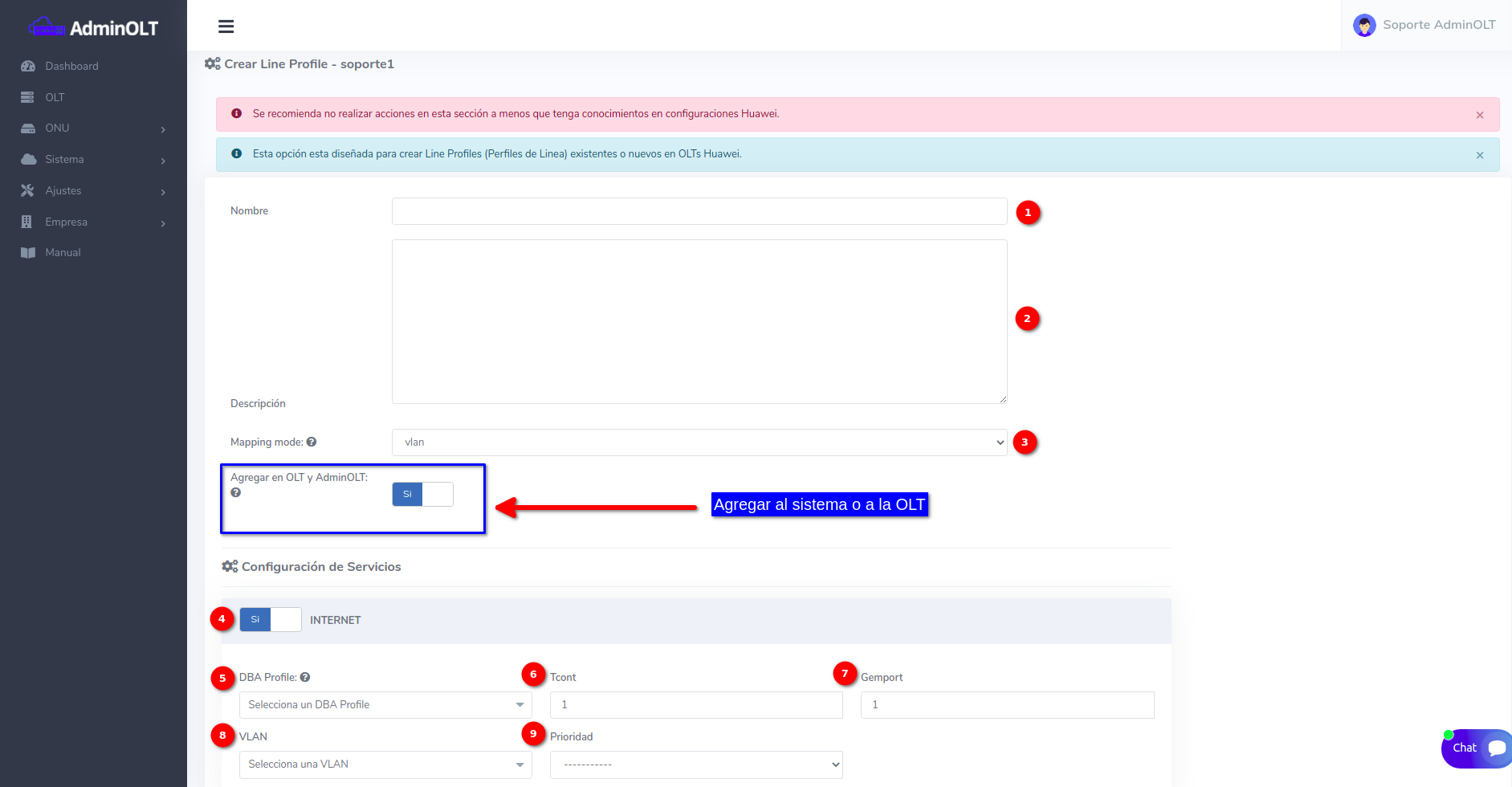Line profiles
Information
AdminOLT has integrated a feature to create advanced configurations of line profiles, so that users can authorize their ONUs using custom configurations and not in the traditional or default way in which AdminOLT does it.
With this update, you will be able to create configurations with VLAN operation modes, to authorize and manage the services you want to provide to your customers. The image shown below illustrates the configuration for xPlay services.

Steps to create Line Profiles.
1Go to the list of OLT's and select (HUAWEI) the one you want to configure.

If you meet the above-mentioned, expand the tools menu and select the Line Profiles option.

2 Select Add Line Profile

- OLT: to which the Line Profile belongs.
- Name: with which the Line Profile was created, it must be exactly as it appears in the OLT.
- Operation mode: most of the Line Profiles configurations you will find in AdminOLT will be of type VLAN.
- GEM Ports: number of GEM ports associated with the Line Profile configuration.

3 Fill in the form data

- Name.
- Description.
- Operation mode (mapping mode): default vlan.
- Enable service: enable if you want configurations to be made for this service.
- DBA: select the DBA (existing DBAs in the OLT will be listed) you want to use for the service configuration.
- Tcont: specify the number of Tconts you want to use for the service configuration (leave default value for new configurations in the OLT).
- Gemport: specify the number of Gemports you want to use for the service configuration (leave default value for new configurations in the OLT).
- VLAN: specify the Client VLAN you want to use for the service configuration (leave default value for new configurations in the OLT).
- Priority: specify the Priority number you want to use for the service configuration.
4 Confirm the form data, wait, and validate that it has been created correctly
DBA Types
- Type 1: fixed bandwidth (high priority services such as VOIP).
- Type 2: assured bandwidth (used for video services).
- Type 3: assured bandwidth, Maximum bandwidth (used for video services).
- Type 4: Maximum bandwidth (best effort, low priority services like Internet).
- Type 5: fixed bandwidth, Assured bandwidth, Maximum bandwidth (all services).
Priorities
April 12, 2024, 3:32 p.m. - Visitas: 19334
